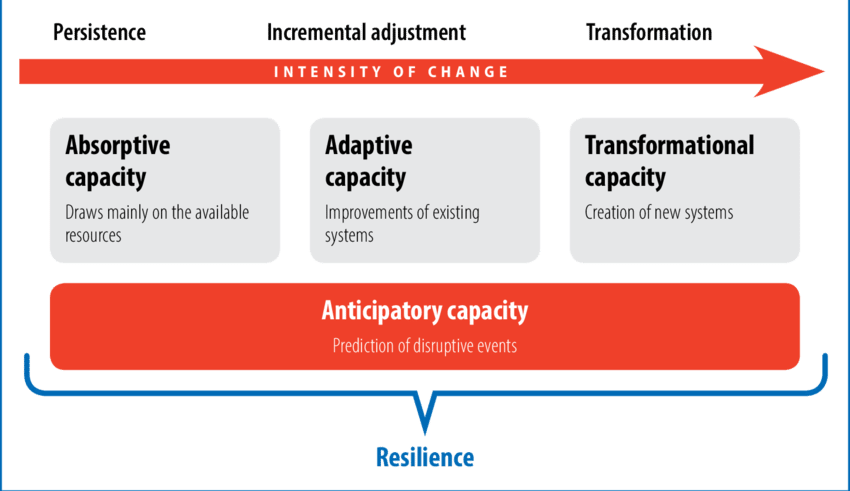Along the continuum of vulnerability to resilience


Jacob, Arun & Nakhooda, Smita & Tiwari, Bishwa & Rankine, Hitomi & Beerepoot, Milou & Lisa Dacanay, Marie & Jiwanji, Moortaza & Kharrazi, Ali & Hee Kim, Seung & Lee, Alice & O’Connell, Deborah & Schandl, Heinz & Varma, Anshuman & Yutong, Li. (2018). Transformation towards sustainable and resilient societies in Asia and the Pacific. 10.22617/TCS189274-2.
Continuum… incremental changes that are gradually occurring but can have a completely different results at the end in comparison to the beginning.
Vulnerability and resilience, two words often used in research, especially when it is regarding climate change. But what do they mean? During the course of my research, I have come across these words countless times. Vulnerability and resilience have different definitions according to different people. For example, see Weichselgartner (2001) ‘Disaster Mitigation: the concept of vulnerability revisited‘ for a comprehensive list of vulnerability definitions.
Often seen as opposite ends of the spectrum it is interesting to point out that vulnerability and resilience are similar in that they are both about responding to a disturbance and the implications for humans and nature (Bene 2012; Adger 2006; Miller et al. 2010). Vulnerability and resilience are human and nature’s ability to cope to shocks and stressors. Shocks and stressors come in a variety of forms ranging from natural hazards such as typhoons, cyclones, drought and landslides to inadequate socio-political infrastructure such as weak governance, conflict arising over access to natural resources, gender equalities inter alia.
To be vulnerable does not always coincide with poverty levels which is another very important I have come to understand. Individuals, communities and systems can all be weak for various reasons. For example, geographic location of where a person/ institution resides is paramount in discerning whether they will be vulnerable to climate change. You could be very wealthy but all that wealth will not stop an earthquake or flash floods from destroying your home/ building and thus, you are vulnerable.
To be resilient is not always the end result. Resilience is built by adapting to a changing environment and achieving sustainable development in the process. According to the expert consultation report on The Resilience Continuum (2017), comprehensive risk management will ensure that the most proactive steps are taken to build people’s long term resilience. There is a greater need of government action at a local level. The UNFCCC has called for comprehensive risk management as a strategy to advance the adaptation agenda which has prompted a discussion on the aforementioned concepts of adaptation, resilience and risk management to contribute to each other and to what extent the resilience continuum can advance the implementation of the Paris Agreement and the Sustainable Development Goals by taking care of climate related risks .
